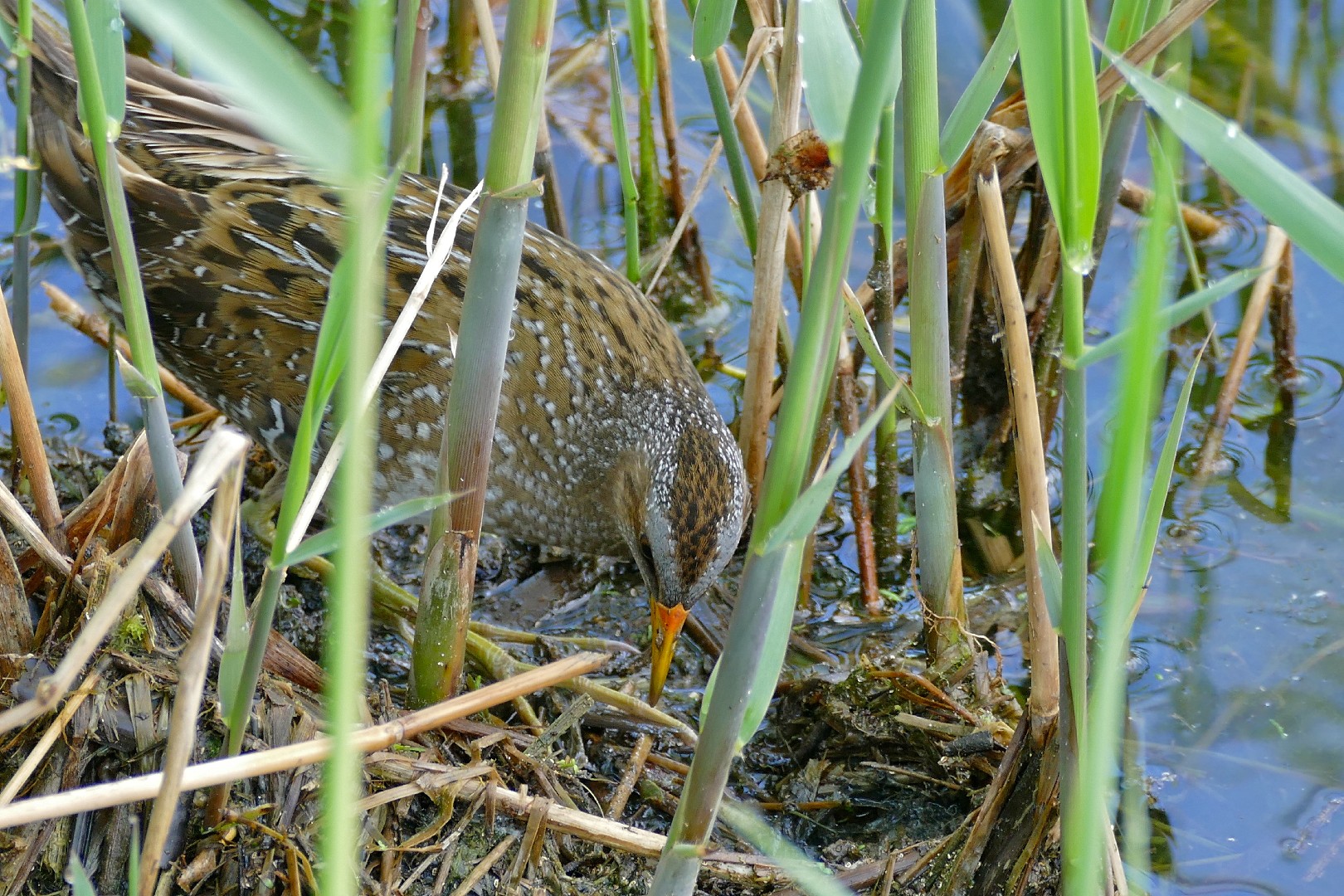Spotted Crake
A species of Large Gray Crakes Scientific name : Porzana porzana Genus : Large Gray Crakes
Spotted Crake, A species of Large Gray Crakes
Botanical name: Porzana porzana
Genus: Large Gray Crakes
Content
Description People often ask General Info
 Photo By Bernard DUPONT , used under CC-BY-SA-2.0 /Cropped and compressed from original
Photo By Bernard DUPONT , used under CC-BY-SA-2.0 /Cropped and compressed from original Description
The spotted crake (Porzana porzana) is a small waterbird of the family Rallidae. The scientific name is derived from Venetian terms for small rails. The spotted crake's breeding habitat is marshes and sedge beds across temperate Europe into western Asia. They nest in a dry location in marsh vegetation, laying 6–15 eggs. This species is migratory, wintering in Africa and Pakistan. At 19–22.5 cm (7.5–8.9 in) length, spotted crakes are slightly smaller than water rails, from which they are readily distinguished by the short straight bill, yellow with a red base. Adults have mainly brown upperparts and blue-grey breast, with dark barring and white spots on the flanks. They have green legs with long toes, and a short tail which is buff underneath. Immature spotted crakes are similar, but the blue-grey is replaced by brown. The downy chicks are black, as with all rails. The only confusion species is the sora, a rare vagrant from North America. However, that species lacks the breast spotting and has an unstreaked crown stripe. These birds probe with their bill in mud or shallow water, also picking up food by sight. They mainly eat insects and aquatic animals. Spotted crakes are very secretive in the breeding season, and are then mostly heard rather than seen. They are then noisy birds, with a distinctive repetitive whiplash-like hwuit, hwuit call. They can be easier to see on migration. The spotted crake is one of the species to which the Agreement on the Conservation of African-Eurasian Migratory Waterbirds (AEWA) applies. The Western European population has declined in recent decades, and the species is now a very rare breeding bird in Great Britain. 
Size
24 cm
Colors
Brown
Black
Bronze
Gray
White
Life Expectancy
7 years
Nest Placement
Ground
Feeding Habits
Spotted Crake consumes a diet primarily comprising insects and aquatic animals, utilizing foraging and hunting techniques that capitalize on their wetland habitats. These birds display unique dietary adaptations for such environments, selecting their prey amid aquatic vegetation during specific feeding times.
Habitat
Spotted Crake thrives in temperate freshwater wetlands across Europe to western Asia, preferring dense vegetation like sedges and rushes in muddy or shallowly flooded environments. Habitats include marshes, fens, and lake edges. While migrating, they adapt to various wetlands and in Africa, they inhabit transient wetlands up to 2420 meters altitude.
Dite type
Insectivorous
People often ask
General Info
Feeding Habits
Bird food type
Species Status
Not globally threatened.